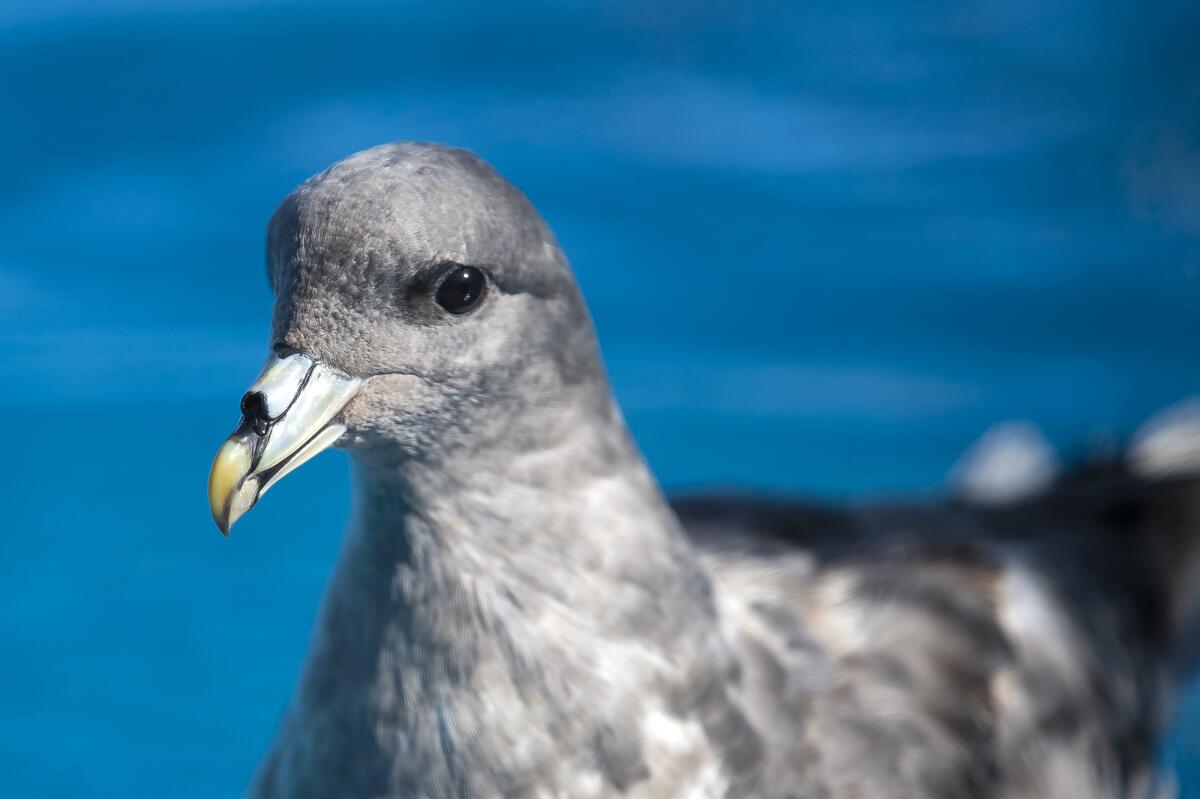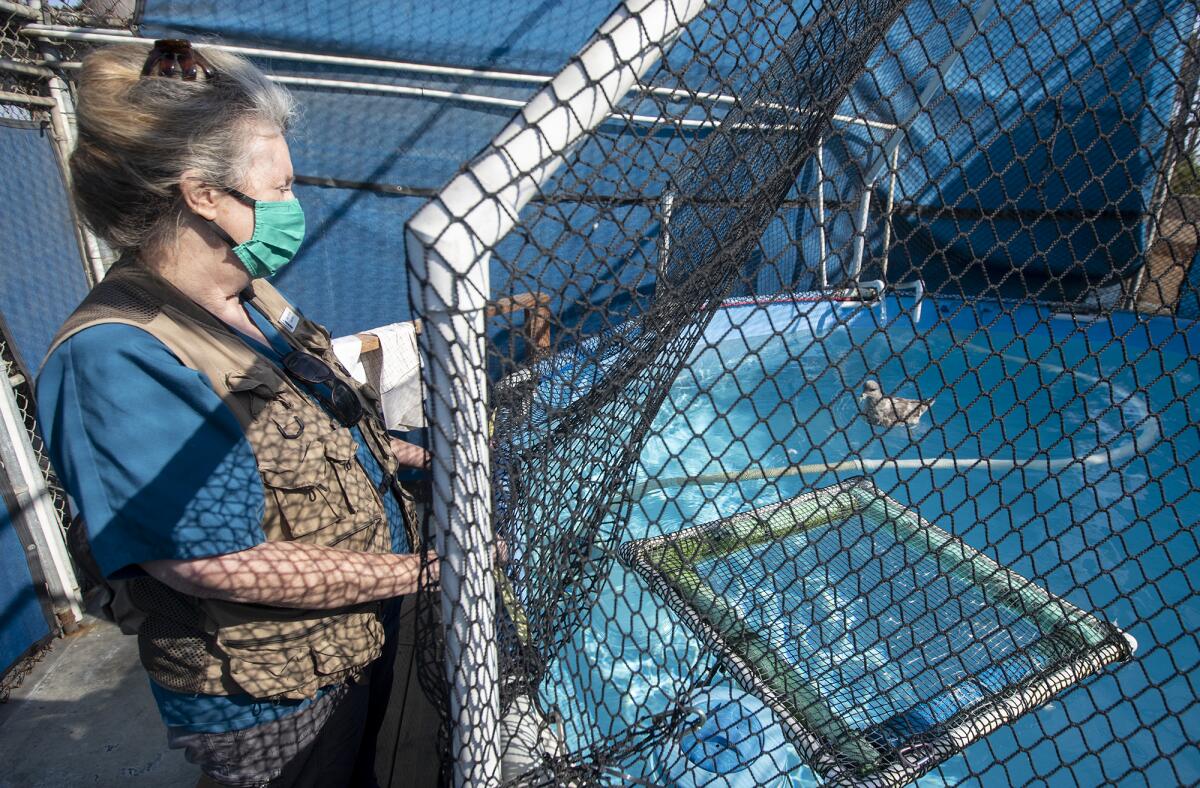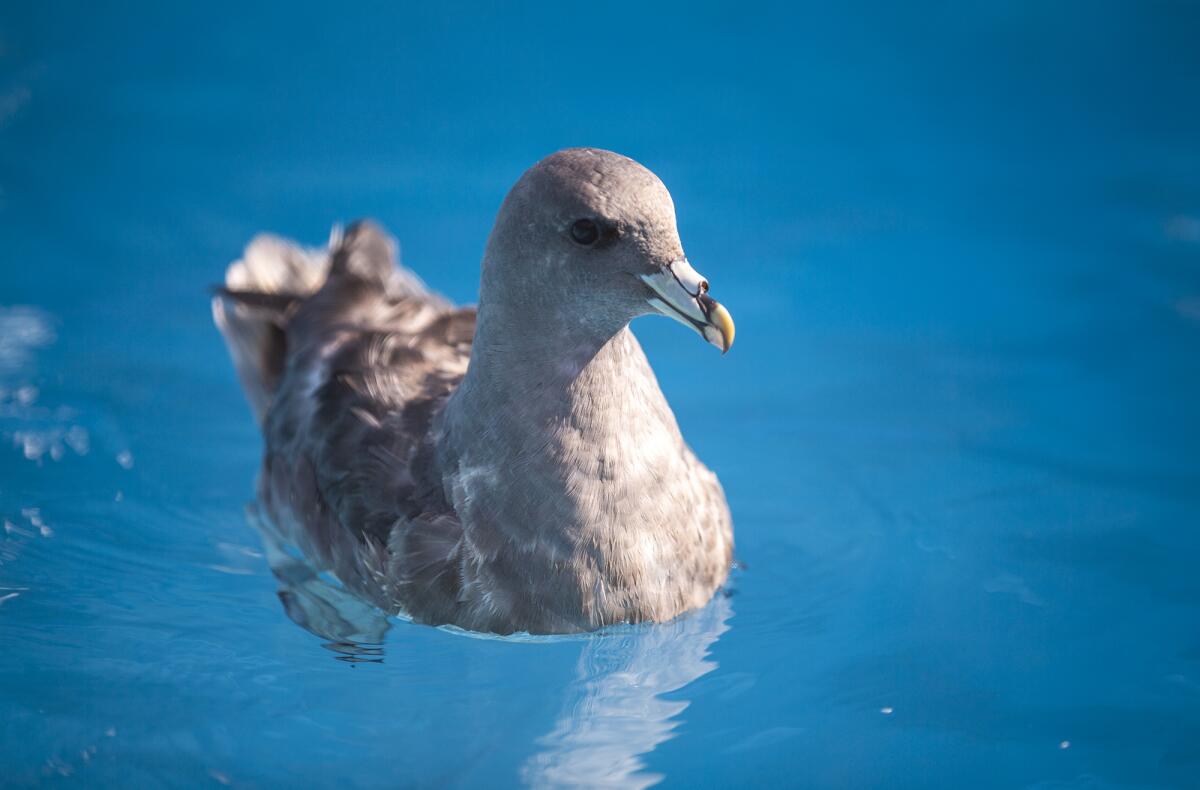Huntington Beach wildlife rescue group rehabs sub-arctic seabird mistaken for seagull

A Huntington Beach wildlife rescue group on Friday hitched a ride on a whale-watching tour headed out of Newport Landing for the release of a special seabird who, three months earlier, was in a heap of trouble.
Debbie McGuire, executive director of the Wetlands and Wildlife Care Center, said her organization received a call on June 3 about a seagull that had been found in Seal Beach in critical condition.
Long Beach Animal Control officers explained the small bird was soaked to the bone and had a puncture wound on its neck that looked infected. Its feet were injured, and it appeared to be suffering from dehydration and hypothermia — could the care center take it?
Short answer: yes.
“We get all types of gulls—Western gulls, California gulls, Ring-billed gulls,” McGuire explained of the nonprofit, which has for 49 years rehabbed all manner of wildlife. “We also get a lot of pelicans and cormorants…shore birds, plovers, coots. We get several geese and ducks, too.”

However, when the transport was made, WWCC staff members noticed something odd. The bird’s upper bill was topped with nasal tubes, or naricorns. It wasn’t a seagull at all — it was a northern fulmar.
A relative of albatrosses and petrels, the stout-bodied seabirds frequent sub-arctic regions of the Pacific Atlantic and Arctic oceans, where they feed over deep waters until migrating south later in the year.
“We get quite a few every year, about a few dozen, but usually we see them in the fall,” McGuire said.
Using their powerful sense of smell, they sniff out squid, fish and crustaceans and largely remain at sea, returning to shore to breed on steep cliffs. An incredibly long-lived species, some birds have been recorded living into their 50s.
But, without some serious intervention, the fulmar found on Seal Beach wouldn’t be so lucky.
Wetlands and Wildlife Care Center performed multiple surgeries to repair the bird’s neck wound, likely caused by a fishhook, rehydrated it and helped it re-waterproof its feathers.
McGuire explained seabirds have uropygial glands that produce a waxy substance that, through preening, coats their feathers. A wound or a tear from a fishhook can rupture that natural barrier, allowing water infiltration that hinders flight.
The 600-gram bird recuperated at the Huntington Beach facility for three months before staff determined it was healthy enough to be released. However, because fulmars mainly live over deep waters, staff members needed to find a vessel.
Luckily, Davey’s Locker Whale Watching & Sport Fishing had a tour leaving bright and early Friday morning. So, rescuers boxed up the little bird (which staff had come to think of as female) and headed for Newport Beach.

“She was smelling the salt water, and the little box she was in was rocking more and more the further we got out,” McGuire said of the journey. “It was like she was saying, ‘I’m ready!’”
About 3 miles from shore, it was time for the release. No sooner had the box opened when the little fulmar took to the sky. She dived into the water for a quick drink, then sped off so fast staff members couldn’t even photograph the occasion.
For McGuire, releases are the best part of her job.
“It just reaffirms why I’m doing this — because I want to get a healthy individual back into its environment,” she added. “And that’s what we were able to do today.”
For more on the Wetlands and Wildlife Care Center, including how to become a volunteer, visit wwccoc.org.
All the latest on Orange County from Orange County.
Get our free TimesOC newsletter.
You may occasionally receive promotional content from the Daily Pilot.




